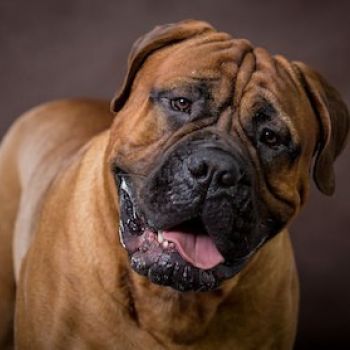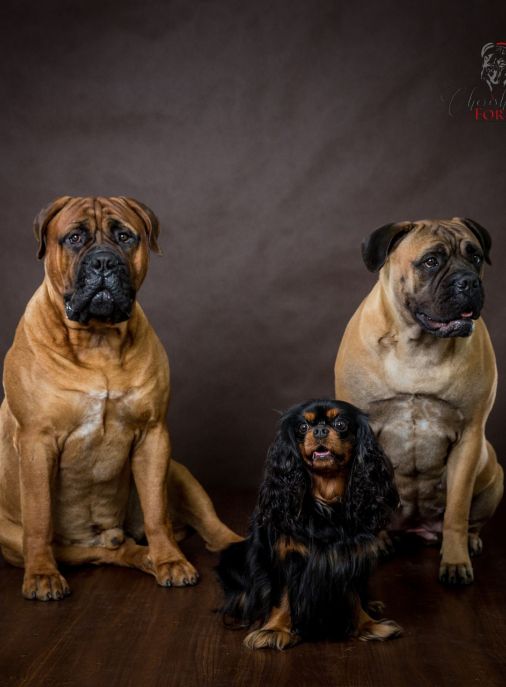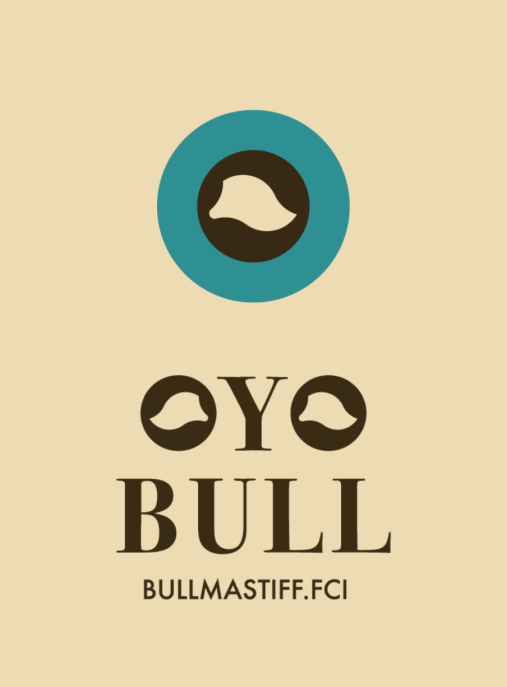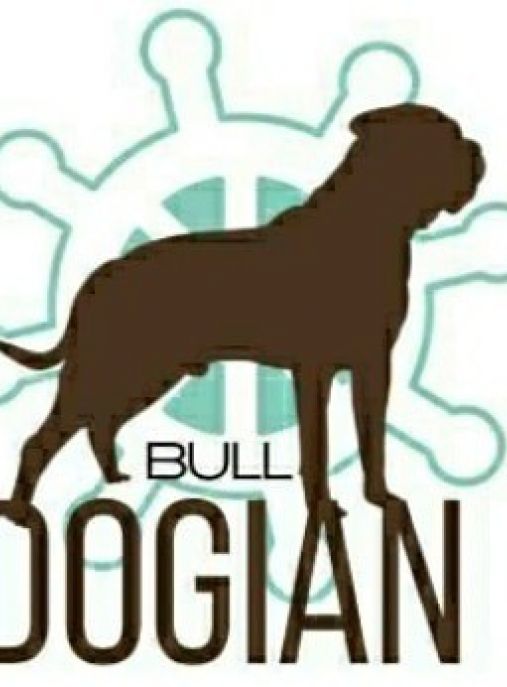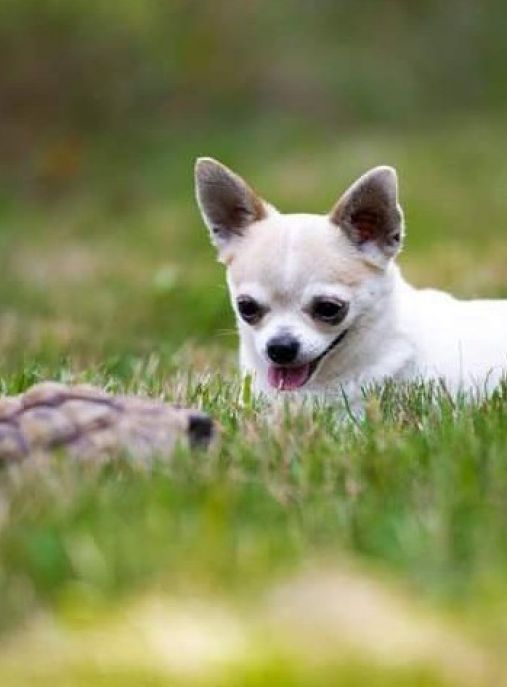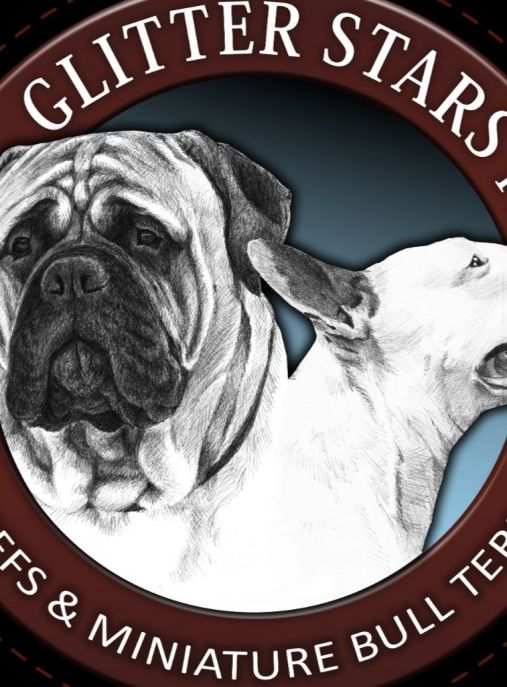Bullmastiff - to be published
The Bullmastiff, a majestic and powerful breed, possesses a character that is as impressive as its physical appearance. These dogs are known for their loyalty, intelligence, and gentle nature, making them excellent companions and protectors. Understanding their character, behavior, and the best ways to raise and train them is crucial for anyone considering adding a Bullmastiff to their family.
One of the defining traits of Bullmastiffs is their unwavering loyalty. They form strong bonds with their owners and are incredibly protective of their loved ones. This loyalty extends to their territory, making them exceptional guard dogs. However, it is important to note that their protective instincts can sometimes lead to aggression towards strangers or other animals if not properly socialized and trained.
Despite their imposing size and strength, Bullmastiffs are gentle and affectionate dogs. They are known for their patience and tolerance, especially with children. Their calm and easygoing nature makes them excellent family pets, as they are often tolerant of rough play and can adapt well to living with other pets. However, early socialization is crucial to ensure they grow up to be well-rounded and friendly dogs.
Bullmastiffs are intelligent and eager to please, which makes training them a relatively straightforward task. They respond well to positive reinforcement techniques, such as treats, praise, and play. Consistency and firmness are key when training a Bullmastiff, as they can be stubborn at times. Early obedience training and socialization are essential to prevent any potential behavioral issues that may arise from their protective instincts.
Exercise is an important aspect of raising a Bullmastiff. While they are not excessively active dogs, they still require regular exercise to maintain their physical and mental well-being. Daily walks, playtime, and mental stimulation activities, such as puzzle toys, are recommended. However, it is important to avoid excessive exercise, especially during their growth phase, as their joints are still developing.
Bullmastiffs are known for their calm and relaxed demeanor indoors. They are generally not prone to excessive barking or destructive behavior. However, they do require a spacious living environment due to their large size. A securely fenced yard is essential to provide them with the necessary space to move around and explore.
Proper grooming is also important for Bullmastiffs. Their short coat requires minimal maintenance, but regular brushing helps to keep their coat healthy and shiny. They are moderate shedders, so occasional shedding should be expected. Regular nail trimming, teeth brushing, and ear cleaning are also necessary to maintain their overall health.
In conclusion, Bullmastiffs possess a character that is a perfect blend of loyalty, intelligence, and gentleness. They are fiercely protective of their loved ones and make excellent guard dogs. With proper socialization, training, and exercise, they can be well-rounded family pets. Their calm and easygoing nature, combined with their imposing appearance, make them a truly remarkable breed.
The Bullmastiff is a large and powerful breed known for its loyalty, intelligence, and protective nature. Caring for a Bullmastiff requires a combination of physical exercise, mental stimulation, proper nutrition, grooming, and regular veterinary care. Here are some tips on how to care for Bullmastiffs, including what to do and what not to do:
1. Exercise: Bullmastiffs are not overly active dogs, but they still require regular exercise to maintain a healthy weight and prevent boredom. Daily walks, playtime in a securely fenced yard, and occasional off-leash activities in a safe environment are recommended. However, avoid excessive exercise, especially during hot weather, as Bullmastiffs are prone to overheating.
2. Mental Stimulation: These dogs are intelligent and need mental stimulation to prevent boredom and destructive behavior. Engage them in puzzle toys, obedience training, and interactive games to keep their minds sharp and active.
3. Socialization: Early and ongoing socialization is crucial for Bullmastiffs. Introduce them to various people, animals, and environments from a young age to ensure they grow up to be well-rounded and confident dogs. Proper socialization helps prevent aggression and fear-based behaviors.
4. Training: Bullmastiffs are eager to please and respond well to positive reinforcement training methods. Start training early, focusing on basic obedience commands such as sit, stay, and come. Consistency, patience, and rewards-based training will yield the best results.
5. Grooming: Bullmastiffs have a short, dense coat that requires minimal grooming. Regular brushing with a soft-bristle brush or grooming mitt helps remove loose hair and keeps their coat healthy. Additionally, check their ears regularly for signs of infection, trim their nails as needed, and brush their teeth to maintain good oral hygiene.
6. Nutrition: Provide a balanced and high-quality diet suitable for large breed dogs. Bullmastiffs are prone to obesity, so measure their food portions carefully and avoid overfeeding. Consult with a veterinarian to determine the appropriate diet and feeding schedule for your Bullmastiff's age, weight, and activity level.
7. Health Care: Regular veterinary check-ups are essential to monitor your Bullmastiff's overall health and address any potential issues early on. Vaccinations, parasite prevention, and dental care should be part of their routine healthcare. Additionally, be aware of common health concerns in the breed, such as hip dysplasia, elbow dysplasia, bloat, and heart conditions. Regular exercise, a healthy diet, and maintaining a suitable weight can help minimize the risk of these conditions.
What not to do:
1. Do not leave your Bullmastiff alone for extended periods. They thrive on human companionship and may develop separation anxiety if left alone for too long.
2. Avoid using harsh training methods or punishment-based techniques. Bullmastiffs respond best to positive reinforcement and gentle guidance.
3. Do not skip socialization. Lack of proper socialization can lead to fearfulness, aggression, and behavioral problems.
4. Avoid overexercising your Bullmastiff, especially during puppyhood. Their growing bodies are susceptible to joint and bone issues, so consult with a veterinarian to determine appropriate exercise levels.
5. Do not overfeed your Bullmastiff. Obesity can lead to various health problems, including joint issues and heart disease. Follow a balanced diet and monitor their weight regularly.
6. Avoid neglecting their dental care. Poor oral hygiene can lead to dental diseases and other health issues. Regularly brush their teeth and provide appropriate dental chews or toys.
Remember, Bullmastiffs are gentle giants that require love, attention, and proper care. By following these tips, you can ensure your Bullmastiff lives a happy, healthy, and fulfilling life.
The Bullmastiff, a majestic and powerful breed, is known for its distinctive coat color that adds to its overall charm and allure. The common color of Bullmastiff dogs is a rich and deep shade of fawn, which is often described as a warm golden or tan hue. This color is one of the defining characteristics of the breed and contributes to their regal appearance.
The fawn color of Bullmastiffs can vary slightly, ranging from a lighter, sandy tone to a darker, reddish-brown shade. The coat is typically solid and uniform in color, with minimal variations or markings. This consistency in color adds to the breed's elegance and gives them a sleek and polished appearance.
The fawn color of Bullmastiffs is often accentuated by a black mask that covers their muzzle. This mask is a distinguishing feature of the breed and serves to highlight their expressive eyes and strong facial structure. The contrast between the fawn coat and the dark mask creates a striking and eye-catching combination, further enhancing their overall appeal.
In addition to the fawn coat color, Bullmastiffs may also have small white markings on their chest or toes. These markings, known as "flash," are considered acceptable within the breed standard and add a touch of uniqueness to each individual dog. However, excessive white markings are not desirable and can be considered a fault in show dogs.
The fawn color of Bullmastiffs is not only aesthetically pleasing but also serves a practical purpose. It helps them blend into their surroundings, making them excellent watchdogs and guardians. This natural camouflage allows them to remain inconspicuous while keeping a watchful eye on their surroundings, ready to protect their loved ones if the need arises.
The coat of a Bullmastiff is dense, short, and smooth, providing them with protection against various weather conditions. This low-maintenance coat is easy to groom and requires minimal effort to keep it looking its best. Regular brushing helps to remove loose hair and keep the coat shiny and healthy.
In conclusion, the common color of Bullmastiff dogs is a captivating fawn shade that ranges from a warm golden to a deep reddish-brown. This color, combined with their black mask, creates a visually striking appearance that is both regal and powerful. The fawn coat, along with their strong build and confident demeanor, contributes to the breed's overall majestic presence. Whether standing guard or simply lounging at home, Bullmastiffs exude an undeniable charm and elegance that is enhanced by their beautiful coat color.
The Bullmastiff is a large and powerful breed known for its loyalty, intelligence, and protective nature. When it comes to their health, Bullmastiffs are generally robust dogs, but like any other breed, they are prone to certain health issues. Understanding these common diseases and taking appropriate care can help ensure the well-being of your Bullmastiff.
One of the most prevalent health concerns in Bullmastiffs is hip dysplasia. This condition occurs when the hip joint doesn't develop properly, leading to pain, lameness, and arthritis. Regular exercise on soft surfaces, maintaining a healthy weight, and avoiding excessive jumping during the puppy stage can help reduce the risk of hip dysplasia. Additionally, responsible breeders perform hip evaluations on their breeding dogs to minimize the occurrence of this condition.
Another common health issue in Bullmastiffs is bloat, also known as gastric dilatation-volvulus (GDV). Bloat is a life-threatening condition that occurs when the stomach fills with gas and twists on itself. This can lead to a rapid onset of symptoms, including a distended abdomen, restlessness, unproductive retching, and difficulty breathing. Immediate veterinary attention is crucial in such cases, and preventive measures include feeding multiple small meals throughout the day, avoiding exercise immediately after meals, and using elevated feeding bowls.
Heart disease is also seen in Bullmastiffs, with dilated cardiomyopathy (DCM) being the most common form. DCM is a condition where the heart muscle weakens, leading to an enlarged heart and reduced pumping efficiency. Regular veterinary check-ups, a balanced diet, and appropriate exercise can help detect and manage heart disease early on. Genetic testing of breeding dogs can also help reduce the risk of passing on this condition to future generations.
Skin issues are another concern in Bullmastiffs. Due to their loose skin and wrinkles, they are prone to skin infections, allergies, and hot spots. Regular grooming, including cleaning the skin folds and ears, can help prevent these issues. A healthy diet rich in essential fatty acids can also promote skin health.
Like many large breeds, Bullmastiffs are susceptible to certain types of cancer, including lymphoma, mast cell tumors, and bone cancer. Regular veterinary check-ups, early detection, and prompt treatment are crucial in managing cancer. Additionally, maintaining a healthy lifestyle, providing a balanced diet, and avoiding exposure to environmental toxins can help reduce the risk.
To ensure the overall health of your Bullmastiff, regular veterinary check-ups, vaccinations, and parasite prevention are essential. A nutritious diet tailored to their specific needs, including high-quality protein and controlled calorie intake, can help maintain a healthy weight and prevent obesity-related issues. Regular exercise, such as daily walks and mental stimulation, is important to keep them physically and mentally fit.
Lastly, providing a loving and stress-free environment is vital for the well-being of Bullmastiffs. They thrive on human companionship and can suffer from separation anxiety if left alone for long periods. Socialization from an early age, positive reinforcement training, and mental stimulation can help prevent behavioral issues and promote a happy and healthy Bullmastiff.
In conclusion, while Bullmastiffs are generally healthy dogs, they are prone to certain health conditions. By being aware of these common diseases and taking proactive measures, such as regular veterinary care, appropriate exercise, and a balanced diet, you can ensure the optimal health and well-being of your Bullmastiff companion.
The Bullmastiff is a large and powerful breed known for its loyalty, intelligence, and gentle nature. To ensure their overall health and well-being, it is crucial to provide them with a balanced and nutritious diet. Proper nutrition plays a vital role in maintaining their muscle mass, joint health, and overall vitality. In this text, we will delve into the nutrition requirements of Bullmastiffs, offering advice on what and how to feed them, as well as highlighting foods to avoid.
When it comes to feeding a Bullmastiff, it is important to consider their size and activity level. These dogs are prone to obesity, so it is crucial to monitor their weight and adjust their food intake accordingly. A well-balanced diet for a Bullmastiff should consist of high-quality protein, healthy fats, and a moderate amount of carbohydrates.
Protein is an essential component of a Bullmastiff's diet as it helps in maintaining their muscle mass and supports their overall growth. Look for dog food that contains real meat as the primary ingredient, such as chicken, beef, or fish. Aim for a protein content of around 25-30% in their diet.
Healthy fats, such as omega-3 and omega-6 fatty acids, are beneficial for Bullmastiffs as they support their skin and coat health, reduce inflammation, and promote brain function. Look for dog food that includes sources of healthy fats like fish oil or flaxseed oil.
Carbohydrates should make up a smaller portion of a Bullmastiff's diet, as they have a lower energy requirement compared to more active breeds. Opt for complex carbohydrates like sweet potatoes, brown rice, or whole grains, which provide a steady release of energy and are easier to digest.
Feeding frequency is another important aspect to consider. Bullmastiffs are prone to bloat, a potentially life-threatening condition, so it is recommended to divide their daily food intake into two or three smaller meals. This helps prevent overeating and reduces the risk of gastric torsion.
While it is essential to provide a balanced diet, there are certain foods that should be avoided as they can be harmful to Bullmastiffs. Some common foods toxic to dogs include chocolate, grapes, raisins, onions, garlic, and caffeine. These can cause various health issues, ranging from gastrointestinal upset to organ damage. Additionally, avoid feeding your Bullmastiff foods high in sodium, artificial preservatives, and fillers, as these can lead to obesity and other health problems.
It is always a good idea to consult with a veterinarian to determine the specific nutritional needs of your Bullmastiff. They can provide guidance on portion sizes, recommend suitable commercial dog food brands, or even suggest a homemade diet tailored to your dog's individual needs.
In conclusion, providing a well-balanced and nutritious diet is crucial for the overall health and well-being of Bullmastiffs. A diet rich in high-quality protein, healthy fats, and moderate carbohydrates will support their muscle mass, joint health, and vitality. Remember to monitor their weight, feed them in smaller portions to prevent bloat, and avoid feeding them toxic or unhealthy foods. By following these guidelines and seeking professional advice, you can ensure that your Bullmastiff thrives on a healthy and nutritious diet.

